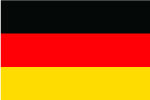Ragavendra R. Baliga, MD, MBA
James B. Young, MD
Heart Failure Clin 4 (2008) ix–xiii
Epidemiologic studies suggest that diastolic dysfunction is present in more than half of the patients admitted to the hospital with congestive heart failure [1], and the mortality rate in these patients appears comparable to that of patients with depressed left ventricular ejection fraction. As there are few randomized clinical trials that include patients who have diastolic heart failure, current therapies have focused on the management of factors that exacerbate the clinical manifestations, such as lowering systolic and diastolic blood pressure, controlling ventricular rate in atrial fibrillation, and decreasing volume overload [2]. Unfortunately, the impact of available therapies on diastolic heart failure has been, at best, moderate, making the search for a more effective treatment urgent [3,4]. Recent work suggests that modulating myocardial energetics merit attention in this quest [5–7].
Intuitively, it is well recognized that sarcomeric relaxation is an active process because skeletal muscle goes into contracture (rigor mortis) rather than relaxation when metabolism stops.Abundant evidence exists that ventricular diastole is also an active process [8,9], because adenosine triphosphate (ATP) is required for the dissociation of actin and myosin in the cardiac myocyte [10–12]. Agents such as D-ribose that enhance recovery of depressed myocardial ATP levels improve diastolic compliance [13,14]. ‘‘Runningout-of-gas,’’ or energy depletion, in the cardiac myocyte [10] was described in heart failure more than three decades ago [15,16], and several studies have characterized the impaired myocardial metabolism in diastolic dysfunction [17–22] and left ventricular hypertrophy (LVH), which often precedes diastolic dysfunction [23–28].




